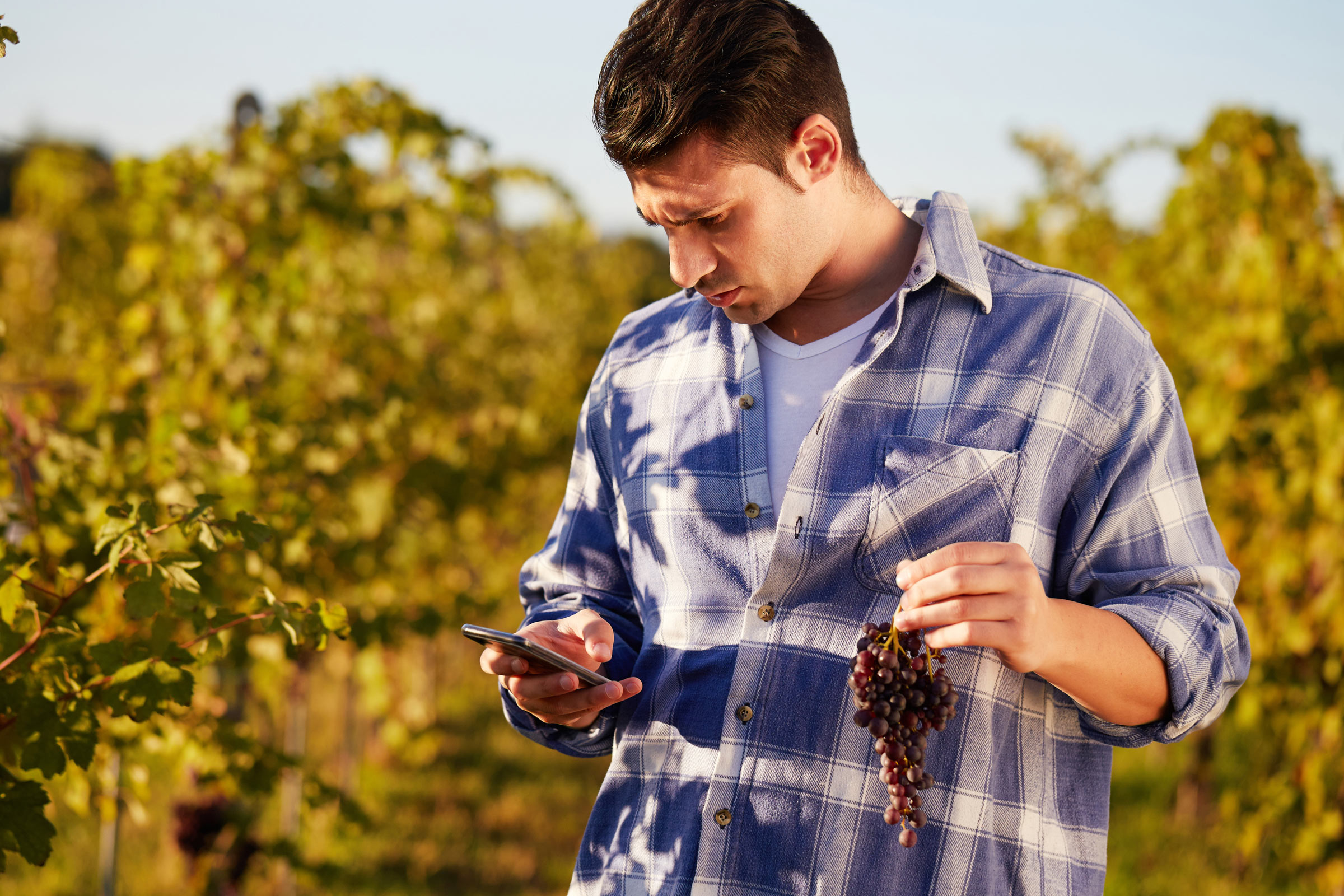Technology is changing how many industries operate – from policing and healthcare to agriculture and the creative industries. Viticulture and winemaking is no different. Technology is becoming increasingly prevalent in the profession, as growers seek to maximise production, efficiency and, ultimately, produce the best wines possible.
How can an app help winemakers?
 Dr Leigh Schmidtke, director of the National Wine and Grape Industry Centre at Charles Sturt University, is working at the forefront of where technology and viticulture meet.
Dr Leigh Schmidtke, director of the National Wine and Grape Industry Centre at Charles Sturt University, is working at the forefront of where technology and viticulture meet.
“We wanted to develop a smartphone app that could measure the colour of grape varieties in the field and in real time. Using that data, viticulturists could measure and chart the growth and maturation of the grape clusters.
“We know that as grapes mature they change colour. For instance, white varieties go from pea green to yellow gold as they develop. And each particular shade in that colour change relates to changes in sensory style of wine. Being able to measure and chart colour change is very valuable. It allows winemakers to associate the maturation curve of the grapes with colour. Thus, they can predict when they should be harvesting the grapes to end up with the style of wine they want to produce.”
“What’s more, the colour and berry size data can be used to monitor negative developments in the crop. For instance, if you start to see a reduction in the size of the berries that you wouldn’t expect on the predicted maturation curve, you know that they are losing water. Then you can take remedial action or harvest the grapes.”
Applying the tech to the vineyard
The Android app – called WineOz SmartGrape – has been developed as part of a project funded by Wine Australia. It’s very user-friendly, allowing viticulturists and vineyard managers to collect data quickly, as Dr Schmidtke explained.
“If you are growing white grape varieties, you choose the part of the app specifically for white grapes. You insert a probe into the cluster. This is a small device – around the size of a single grape – that is used in the app as a reference point for size. You then take a picture of the grape cluster. The algorithms in the image analysis software calibrate the distance from the camera to the berries. The software will also take the probe measurement in pixels then relate it to the size of the surrounding grapes.
“Vine analysis is a time-consuming process. Viticulturists need to go out into the vineyard and select samples and analyse them back in the lab. Often, particularly in large-scale growers, the sample isn’t representative. Or it doesn’t take into account variations in things like microclimate across the whole vineyard. The purpose of the app is to enable growers to collect more data more rapidly, and that represents a more complete picture of the vineyard so they can make better decisions for the crop. They would use the software in the app to measure the temporal and spatial changes of the crop. All that data can then be loaded onto a desktop dashboard to enable comparison between different locations and over time.
“And in fact, it’s not just the grape and wine industries that could use this kind of decision-support tool. Any horticultural crop that relies on some form of objective maturation analysis, particularly those relying on colour change, would benefit from it.”
The future is bright for viticulture innovators
Dr Schmidtke feels that this interface between the traditional skills of grape growing and the opportunities offered by modern technology will become more important in the future of the wine industry.
“Across the board, we are moving more towards technologies to help with real-time measures of composition and quality. Consequently, decisions can be made on how fruit can be directed into specific products. Or where it should go within the production cycle. That might include a range of tech, such as infrared spectroscopy and big data linked to location and climate. In the next 10 years or so, I think there will be more convergence across that kind of data to assist winemakers.
“Anything winegrowers can do to reduce the unknown aspects of the winemaking process helps make production more effective and profitable. This app is particularly useful for producers with large amounts of fruit coming into their facilities within a short period of time. The sort of data available from the app will help them make their production flow more efficient. It will also enable them to treat each batch of grapes the best way to produce the best product.”
Do you want to drive innovation in oenology and viticulture?
If you want to explore this exciting time for viticulture further – and enhance your job prospects in the winemaking industry – Charles Sturt University’s Master of Viticulture and Oenology is ideal. And it can be studied online so you can keep working as you learn. Contact us to find out more.


You must be logged in to post a comment.